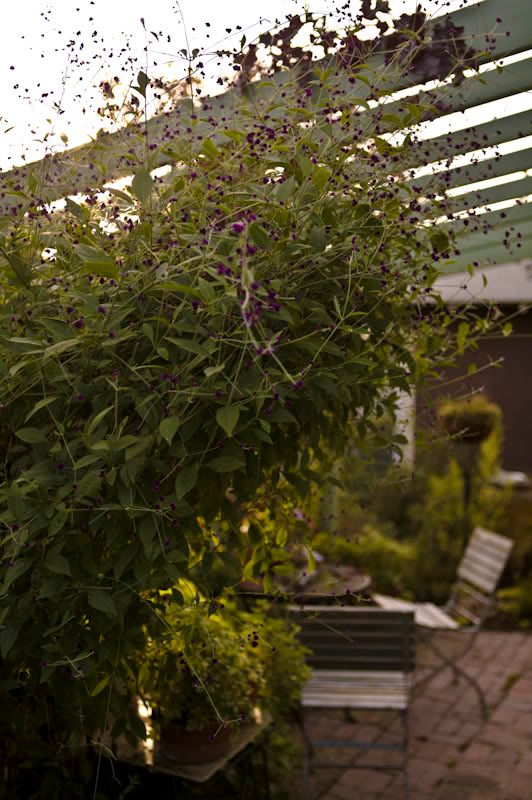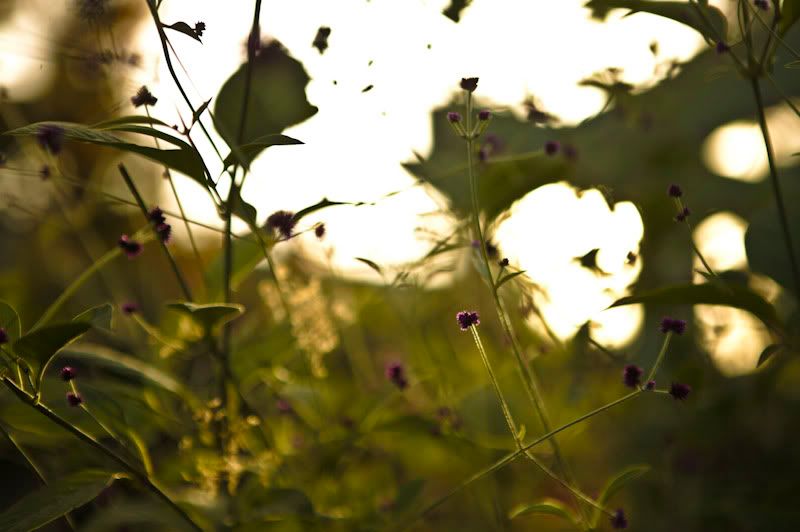This horticultural enigma, resembling in this photo by MB Maher a wayward swarm of magenta bees, may be a native Texan gomphrena. Brought home to my zone 10 garden from a local nursery tagged as a species gomphrena, I first learned of a possible identity from Pam Penick’s blog Digging, where Pam calls the demure version in her garden ‘Grapes.’ Annie’s Annuals lists a lookalike as Gomphrena decumbens, describing it as forming a “mound about 2 1/2 feet tall by 3 feet wide.” As can be seen in the photo, mine is topping the pergola, climbing 8 feet and upwards:

Are all three gomphrenas one and the same, just different sizes due to vagaries of climate and growing conditions? An ethereal closeup:

It’s one of those lusty, flourishing plants which alternately delights and dismays. Its vigor alone is fairly alarming. Many a day has been slated for its removal, but those aerial bobbles are just too entrancing. The complication is the Lansdowne Gem winter-blooming clematis that was destined to be the rightful owner of that trellis. Twenty years ago, heck, even five years ago, there would have been no ambivalence; thumbs down with the gomph, thumbs up with the clem. Having watched countless clems linger on, choosing neither life nor death, requiring slacker growing conditions of constant, even moisture, pride of place goes to (forgive the wordplay) the ballsy interloper. And now I get to use that exquisite vernacular, that it “politely” self-sows, also doesn’t run at the root, but requires frequent clipping to keep its wands of maroon buttons out of the faces of passersby and confined to the trellis and the sky above.
